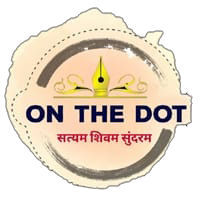The transition from a dominion under British rule to a sovereign, democratic republic on January 26, 1950, stands as a defining moment in India’s history. This journey was marked by meticulous planning, persistent efforts, and a celebration of newfound freedom that echoed across the nation.
January 26 holds a special place in India’s political calendar because, in 1929, the Congress party declared ‘Purna Swaraj,’ rejecting the dominion status proposed by the British regime. The vision for a sovereign and democratic nation gained momentum, leading to the demand for a Constitution that would encapsulate India’s ethos and aspirations.
The genesis of India’s Republic, however, can be traced back to the year 1920 when the first general elections were held to elect members to the inaugural bicameral central legislature – a legislature with two houses – and provincial councils. Parliament in Delhi was inaugurated in a ceremony attended by the Duke of Connaught on February 9, 1921. Little did the nation know that this was a precursor to a monumental transformation that would unfold decades later.
India’s association with the British crown continued even after gaining independence on August 15, 1947. The Government of India Act of 1935 governed the nation, acting as the interim constitutional framework, for three more years post-independence. The wheels of change, however, were set in motion, culminating in the drafting of a new Constitution that would redefine India’s political landscape.
On January 26, 1950, the Constitution of India came into effect, replacing the colonial-era Government of India Act of 1935. This marked the birth of the Indian Republic, and Dr Rajendra Prasad assumed the presidency, symbolising a shift from allegiance to the British monarch to an independent Indian head of state.
The Constituent Assembly, which had toiled over the drafting process for approximately three years, transitioned into the Parliament of India until the nation conducted its first general elections in 1951-52. Dr BR Ambedkar, appointed as the chairman of the drafting committee, played a pivotal role in the constitution-making process.
The deliberations and amendments over the new Constitution stretched over 2 years, 11 months, and 17 days, with 11 sessions held during this period, covering 165 days. The adoption of the Constitution on November 26, 1949, was a precursor to the Republic Day celebrations.
“We, the people of India having solemnly resolved to constitute India into a sovereign socialist secular democratic republic and to secure to all its citizens: justice, liberty, equality and fraternity,” read the preamble to the newly-drafted Indian Constitution.
The Republic Day celebrations, marked by a grand military parade in New Delhi, embraced and reinvented the colonial tradition of military parades. The inaugural Republic Day parade in 1950, held at the Irwin Amphitheatre opposite the Purana Qila in the national capital, set the stage for a tradition that would evolve over the years.
The significance of January 26 lies not only in the adoption of the Constitution but also in India severing its last ties to the British Empire. The day, chosen as Republic Day, witnessed the culmination of years of struggle for independence and the realisation of a dream to be a self-governing nation.




